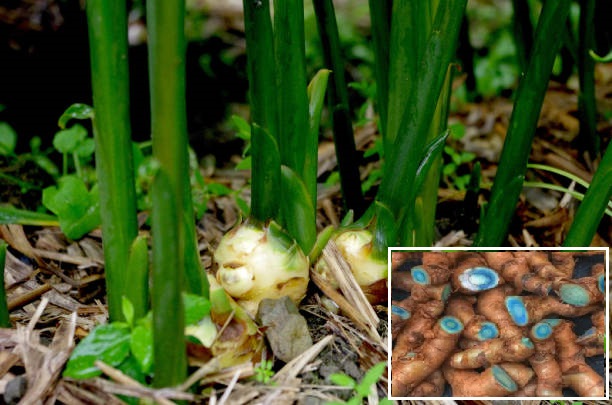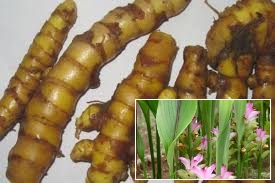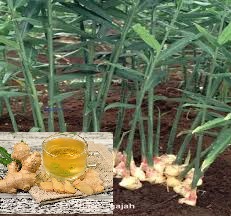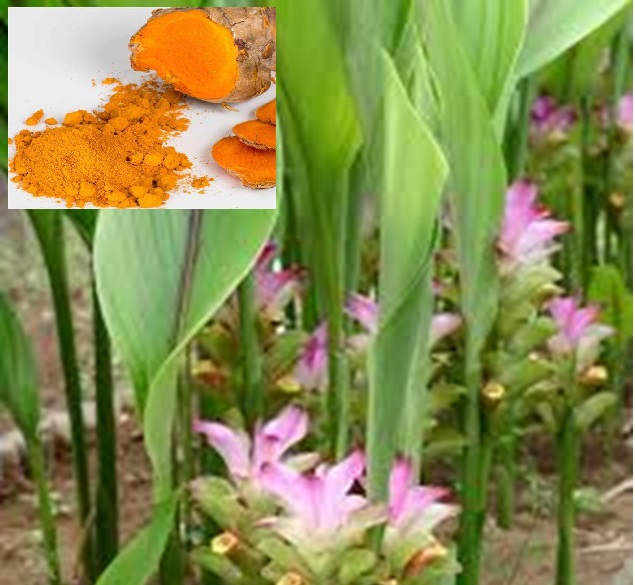Latin Name: Curcuma aeruginosa
Plant Origin and Preferred Growing Habitat:
Temu Ireng, also known as black turmeric, is native to Southeast Asia, particularly Indonesia, Malaysia, and Thailand. It thrives in tropical and subtropical climates, preferring loose, fertile soil with good drainage. The plant is commonly cultivated in home gardens, plantations, and forested areas with partial to full sunlight.
General Appearance:
Temu Ireng is a perennial herbaceous plant that grows up to 1 meter tall. It has broad, lance-shaped leaves with green coloration and a purplish hue along the midrib. The rhizome, the primary medicinal part, is irregularly shaped with dark brown skin and a striking bluish-black interior. It emits a strong, characteristic aroma.

Benefits as a Herb:
Temu Ireng is highly valued in traditional medicine for its wide range of health benefits:
- Digestive Health: It is used to alleviate bloating, flatulence, and indigestion.
- Appetite Stimulant: Commonly given to children to boost appetite.
- Liver Health: Supports liver detoxification and aids in treating jaundice.
- Anti-inflammatory: Contains compounds that help reduce inflammation.
- Antimicrobial Properties: Effective against bacterial and fungal infections.
- Skin Health: Used to treat skin conditions like eczema and acne.
- Detoxification: Helps cleanse the blood and remove toxins from the body.
How to Process Temu Ireng for Consumption as Medicine:
- Herbal Decoction:
- Clean and slice the rhizome. Boil 3–5 grams of the sliced rhizome in 2 cups of water until reduced to 1 cup. Strain and drink the liquid once or twice a day for digestive issues or detoxification.
- Powder Form:
- Dry the rhizome under the sun or in a dehydrator. Grind it into a fine powder. The powder can be mixed with warm water, honey, or milk and consumed as a tonic.
- Topical Paste:
- Crush fresh rhizome and mix with a bit of water or coconut oil to create a paste. Apply to skin conditions such as eczema, boils, or wounds for its antimicrobial and anti-inflammatory effects.
- Combination Remedy:
- Mix Temu Ireng decoction with other herbs like ginger or turmeric to enhance its effects, particularly for respiratory or digestive health.
Precautions:
- Use Temu Ireng in moderation, as excessive consumption may cause nausea or stomach upset.
- Pregnant or breastfeeding women should consult a healthcare provider before use.
Temu Ireng is a potent herbal remedy with a long history of use in traditional medicine. Its diverse benefits and ease of preparation make it a staple in holistic healing practices, particularly in Southeast Asia.





